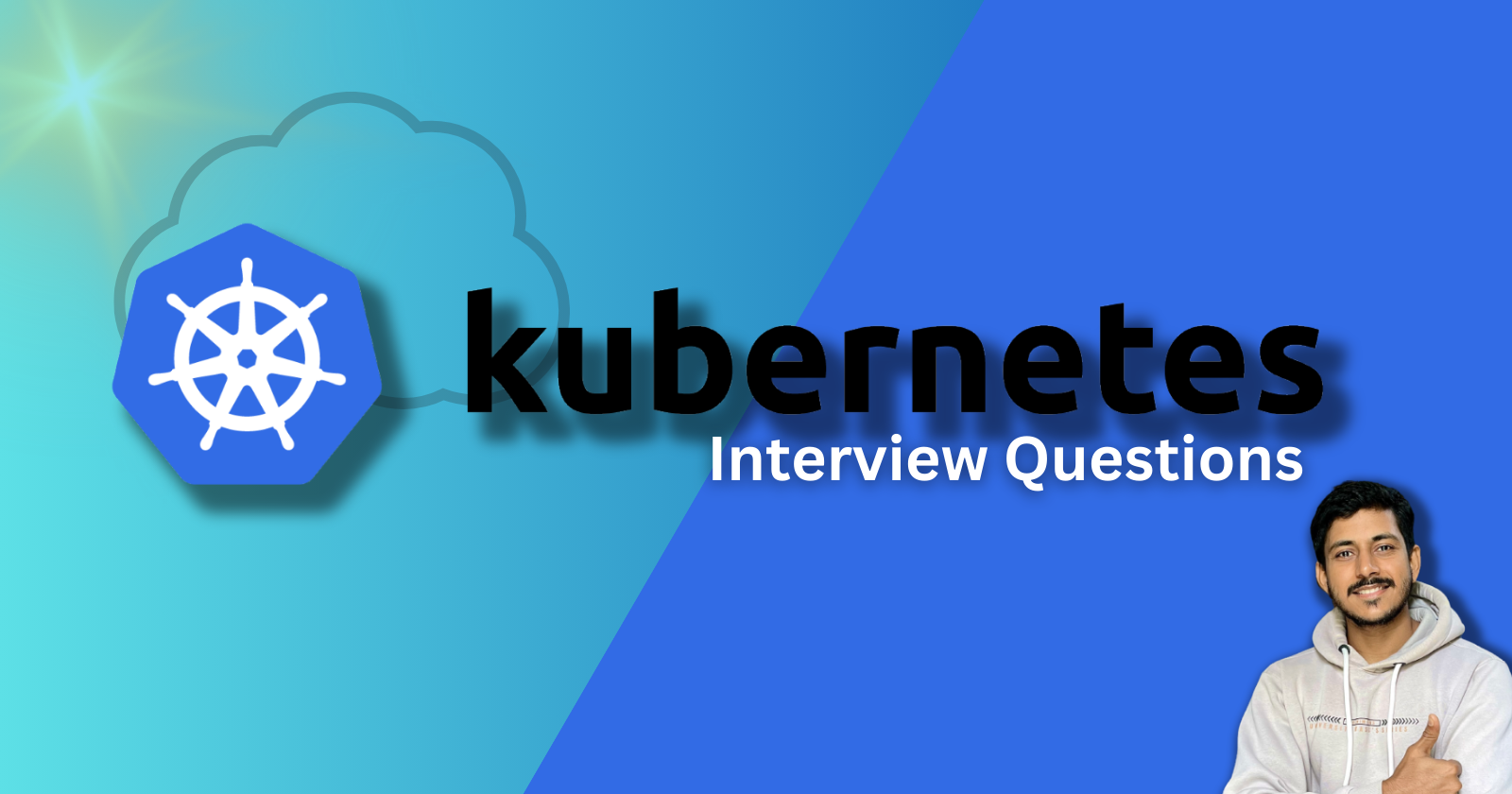Day 37 of 90DaysOfDevOps Challenge: Kubernetes Important Interview Questions
 ANSAR SHAIK
ANSAR SHAIK
Welcome back to the 90DaysOfDevOps challenge! Today, we delve into the world of Kubernetes, a powerful container orchestration platform. Whether you are preparing for an interview or just looking to enhance your knowledge, these Kubernetes interview questions will help you solidify your understanding.
1. What is Kubernetes and why is it important?
Kubernetes, often abbreviated as K8s, is an open-source container orchestration platform designed to automate the deployment, scaling, and management of containerized applications. Its importance lies in its ability to simplify the deployment and operation of applications, ensuring seamless scalability, and facilitating efficient management of containerized workloads.
2. Difference between Docker Swarm and Kubernetes?
Docker Swarm and Kubernetes are both container orchestration tools, but they differ in architecture and features. Kubernetes is more extensive, offering a broader range of features for managing containerized applications, while Docker Swarm is simpler and tightly integrated with Docker. Kubernetes is often preferred for larger, complex deployments.
3. How does Kubernetes handle network communication between containers?
Kubernetes manages network communication between containers using a flat network model. Each pod gets its IP address, and containers within the same pod can communicate over localhost. Kubernetes Services provide stable endpoints for communication, allowing containers to communicate seamlessly, both within and across pods.
4. How does Kubernetes handle scaling of applications?
Kubernetes supports both manual and auto-scaling. Horizontal Pod Autoscaler (HPA) automatically adjusts the number of running pods based on observed CPU utilization or custom metrics. This ensures that applications can scale dynamically to meet varying workloads.
5. What is a Kubernetes Deployment, and how does it differ from a ReplicaSet?
A Kubernetes Deployment is a higher-level abstraction that manages ReplicaSets and provides declarative updates to applications. While a ReplicaSet ensures a specified number of pod replicas are running, a Deployment allows you to declaratively manage the desired state, making updates and rollbacks more straightforward.
6. Can you explain the concept of rolling updates in Kubernetes?
Rolling updates in Kubernetes allow you to update an application without downtime. It gradually replaces old pods with new ones, ensuring a smooth transition. This process maintains application availability by gradually shifting traffic to the updated pods.
7. How does Kubernetes handle network security and access control?
Kubernetes employs Network Policies to control the communication between pods, providing a fine-grained approach to network security. Role-Based Access Control (RBAC) is used for access control, allowing administrators to define and restrict access to resources within the cluster.
8. Can you give an example of how Kubernetes can be used to deploy a highly available application?
To deploy a highly available application, you can use multiple replicas of the application pods distributed across different nodes. Utilizing Kubernetes features like Deployments, Services, and health checks ensures continuous availability and fault tolerance.
9. What is a namespace in Kubernetes? Which namespace does any pod take if we don't specify any namespace?
A namespace in Kubernetes is a way to divide cluster resources between multiple users or projects. If a pod doesn't specify a namespace, it is automatically placed in the default namespace.
10. How does Ingress help in Kubernetes?
Ingress in Kubernetes provides HTTP and HTTPS routing to services based on rules. It acts as an API object managing external access to services, allowing you to define routing rules, hostnames, and paths for incoming traffic.
11. Explain different types of services in Kubernetes?
Kubernetes offers various service types, including ClusterIP, NodePort, and LoadBalancer. ClusterIP provides internal service discovery, NodePort exposes a service on a static port on each node, and LoadBalancer provisions an external load balancer for the service.
12. Can you explain the concept of self-healing in Kubernetes and give examples of how it works?
Self-healing in Kubernetes ensures the continuous availability of applications by automatically restarting or replacing failed containers or nodes. For example, if a pod's container crashes, the ReplicaSet controller ensures a new pod is created to maintain the desired state.
13. How does Kubernetes handle storage management for containers?
Kubernetes provides Persistent Volumes (PV) and Persistent Volume Claims (PVC) to manage storage for containers. PVs represent physical storage resources, while PVCs are requests for storage. Containers can use PVCs to access and use storage resources.
14. How does the NodePort service work?
NodePort service type in Kubernetes exposes a service on a static port on each node's IP. This allows external access to the service by connecting to any node on that specified port.
15. What is a multinode cluster and a single-node cluster in Kubernetes?
A multinode cluster consists of multiple worker nodes, each running containers and contributing to the cluster's resources. A single-node cluster, on the other hand, is a cluster setup on a single machine, typically used for development or testing purposes.
16. Difference between create and apply in Kubernetes?
The kubectl create command is used to create a resource based on a file or stdin. It creates a new resource or updates an existing one, but it doesn't support updating resources in place. On the other hand, kubectl apply is used to apply configuration changes to a resource. It creates resources if they don't exist and updates them if they do, allowing for declarative management of resources.
In conclusion, mastering these Kubernetes interview questions is crucial for anyone navigating the world of DevOps. Keep exploring and stay tuned for more insights as we progress through the 90DaysOfDevOps challenge! Happy coding!
Subscribe to my newsletter
Read articles from ANSAR SHAIK directly inside your inbox. Subscribe to the newsletter, and don't miss out.
Written by

ANSAR SHAIK
ANSAR SHAIK
AWS DevOps Engineer